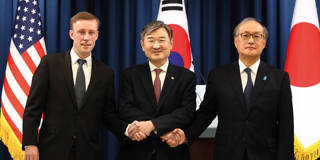Given the outsize impact of US-China competition on East Asian countries, even slightly improved bilateral ties would bode well in the near term. Nonetheless, new risks and political arrangements ensure that the region will continue to be characterized by great-power rivalry and many flashpoints.
WASHINGTON, DC – For several years, tensions in the South China Sea and Taiwan Strait, along with the heavy impact of COVID-19 among Association of Southeast Asian Nations (ASEAN) economies, have posed serious diplomatic challenges in Southeast Asia. But recent developments in Northeast Asia, including escalating tensions on the Korean Peninsula and deepening ties between North Korea and Russia, are equally troubling. A pall has been cast over the region, even as the prospects for a somewhat more stable Sino-American relationship have improved.

WASHINGTON, DC – For several years, tensions in the South China Sea and Taiwan Strait, along with the heavy impact of COVID-19 among Association of Southeast Asian Nations (ASEAN) economies, have posed serious diplomatic challenges in Southeast Asia. But recent developments in Northeast Asia, including escalating tensions on the Korean Peninsula and deepening ties between North Korea and Russia, are equally troubling. A pall has been cast over the region, even as the prospects for a somewhat more stable Sino-American relationship have improved.